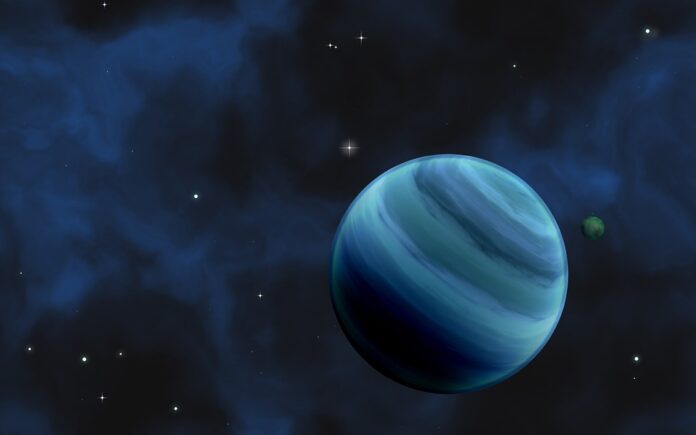The finding of next ban Earth-like planet, in the vicinity of Proxima Centauri, the closest star to the Sun, amazed the world in 2016. This rocky world just 4 light years away could have the necessary conditions to harbor life. And it was just around the corner.
Three years later, another surprise: a possible second planet, a super-Earth called next c, was spinning in the system. And now, an international team of astronomers, including several Spaniards, has found a third rocky world, the ‘d’. Its about lightest exoplanet never described – its mass is barely a quarter of that of the Earth – and it moves so close to its star that its ‘year’ lasts five days. It is probably a hellish place, but it opens the door to find similar worlds that have gone unnoticed until now. There might even be more right there.
lightest planet
Proxima d was located thanks to the spectrograph ESPRESSO, a ‘scale’ to weigh planets installed in the Very Large Telescope (VLT), of the European Southern Observatory (ESO), in Chile. It circles its star at about four million kilometers, less than a tenth of the distance between Mercury and the Sun, and takes just five days to complete one orbit. In comparison, Proxima b takes eleven days and its companion ‘c’, five years, so it has not yet been confirmed and is still considered a planet candidate.
Because it is so close to its star, tidal forces cause ‘d’ to behave like the Moon with the Sun, so that one side is always diurnal and the other night. Its equilibrium temperature (the one it must have due to the radiation it receives from its star at its distance) is about 90ºC, but in reality the illuminated side “it is probably hell, a wasteland of molten rock, like the mouth of a volcano, while in the dark it will be very cold”explains Alejandro Suárez Mascareño, a scientist at the Institute of Astrophysics of the Canary Islands (IAC) and co-author of the study published in ‘Astronomy & Astrophysics’. Such an environment “Although these exotic worlds always surprise us, it is highly unlikely that they are habitable”.
Not a speed camera
The researchers detected Proxima d with the method of radial velocity, which measures changes in a star’s velocity caused by a planet’s gravity. With this method, the size of the planet cannot be known, but its mass can be known, which turned out to be 25% of the Earth’s, three times more than that of Mars. “It is the lightest planet detected by the radial velocity technique and one of the lightest detected so far”, affirms Jorge Lillo-Box, from the Center for Astrobiology (CSIC-INTA) and also co-author of the article. And there are already close to 5,000.
Being so light, the effect of this new world is very small, to the point that Proxima Centauri only varies about 40 centimeters per second (1.4 km per hour). “Finding such a planet is extraordinarily difficult. A traffic radar does not measure the speed of a car with this precision»compares Suárez Mascareño.
“It is a milestone of great technical difficulty – underlines Lillo-Box -, we are approaching the terrain in which we begin to see (in our cosmic neighborhood) planets similar to those in the interior of the Solar System, with a mass like that of the Earth or lighter. Astronomers also do not rule out that the Proxima Centauri family has more members. “Because of its proximity, it will surely be the first star system to which we will be able to send a ship. Therefore, it is important to know him very well., affirms the IAC researcher. The first mission that goes there will have at least three fascinating objectives.
Font: Judith de Jorge / ABC
Reference article: https://www.abc.es/ciencia/abci-planeta-extrasolar-mas-ligero-descubierto-cerca-tierra-202202101421_noticia.html











![[Img #74674]](https://thelatestnews.world/wp-content/uploads/2024/12/Santiago-Ramon-y-Cajal-The-promoter-of-modern-neuroscience-300x200.jpg)

Add Comment